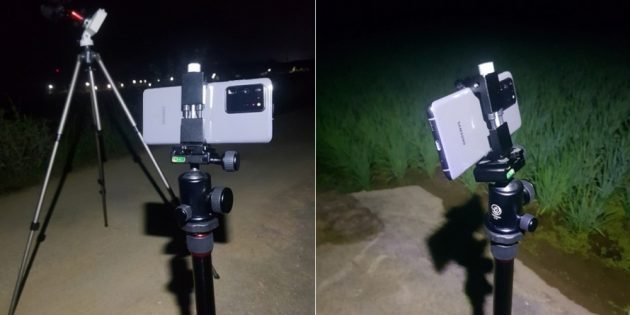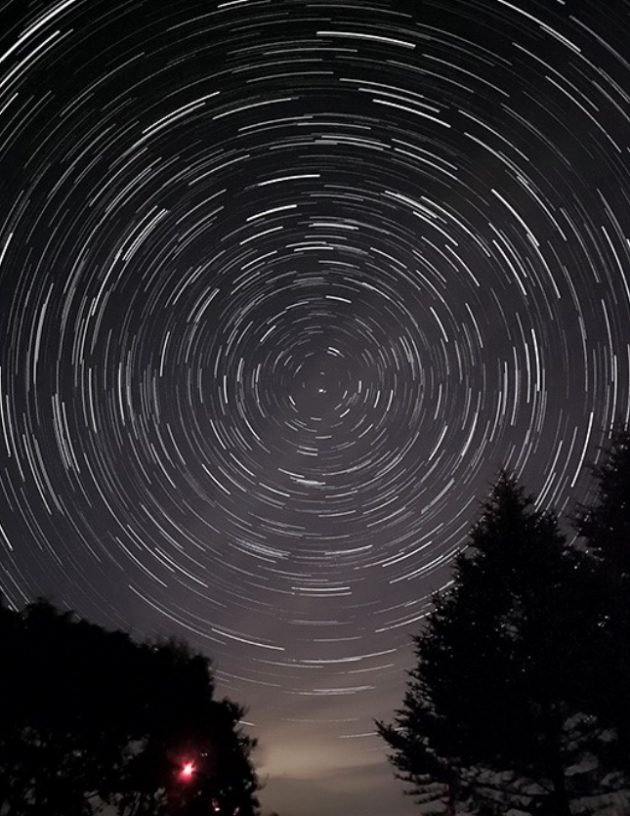Two employees of Samsung's main office in South Korea got carried away with night shooting of space. Over time, they began to do so well that their work got on the official website — you can find a few examples below. Now they shared tips that help them create such pictures without using a professional camera.
It is best to photograph the Milky Way on a moonless night. Don't forget to bring a flashlight and a power bank with you. You will also need a tripod. If you don't have a smartphone holder, you can make it yourself.
Mount your smartphone on a tripod as steadily as possible. Connect the remote control for remote shooting, or switch the shooting mode to the timer. It looks something like this:

Surprisingly, by default, not all smartphones are able to shoot the night sky. Switch to the professional/ advanced shooting mode (the name differs from different manufacturers, but the essence is the same: you need the ability to manually adjust the shutter speed and photosensitivity).
You need to keep the shutter open as long as possible to get enough light. If the shutter speed is long enough, you can even capture the movement of objects in the sky.

This setting is responsible for making things that appear white to the naked eye look white in the photo. For photos of the night sky, the value from 3500 to 4500 is usually optimal.
Photosensitivity, also known as ISO, determines how much light gets into the frame: the higher the ISO value, the lighter the photo. Remember that shooting with high ISO values leads to unnecessary noise in the picture.
In the smartphone settings, select save to RAW. This format allows you to squeeze out maximum details, which is very important when shooting space. If there is no support for this function in a standard camera, shoot through a third—party application - for example, mobile Lightroom offers such an opportunity from free ones.